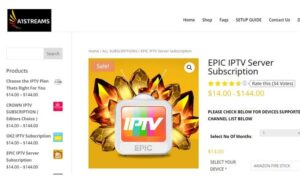According to Judy Rodrigrues of Greenpeace International:
“Our aim is to generate a society-wide understanding of the need to cut wasteful paper use and to help both big and small consumers to take action to make real reductions.”
On June 09, 2008, about fifty European non-governmental, environmental organizations launched a project to address the excessive consumption of paper. They invited individuals and corporate paper users to make a pledge to reduce consumption of paper at the website they created for this purpose, shrinkpaper.org.
About 42 per cent of the lumber produced across the globe goes into pulping and paper production.
If we can eliminate the need for paper in the future, we can greatly reduce the rate of deforestation. Development of electronic paper technology, such as the electronic ink introduced by E Ink Corporation, will take us closer to a greener future. Let’s, in this article, have a look at the electronic paper technology and its progress.
What Is Electronic Paper?
Unlike LCD, LED, or CRT display system, electronic paper technology attempts to achieve the clarity, contrast, and ease of viewing of normal paper on an electronic display.
The technology behind electronic paper is thirty years old; it was developed at Xerox PARC (Palo Alto Research Center). Nicholas K. Sheridon of Xerox PARC created a new display technology known as Gyricon (Greek for ‘rotating image’), which became the basis of the modern e-paper technology.
The ideal modern electronic paper should have high contrast like normal paper and low power consumption; it should be thin and light as well. The electronic paper display (EPD) is so light that it can be folded or curled, while still retaining the image. Also, the EPD should not lose the image even if power supply is not available. These concepts were used in the production of such products as Fabric PC from Fujitsu, which is a notebook computer utilizing electronic paper display; it is very lightweight and not easily damaged.
Electronic Ink Technology
At the forefront of electronic ink display technology are two companies–E Ink Corporation of Cambridge, Massachusetts (recently acquired by Prime View International, Taiwan) and Xerox (through its subsidiary, Gyricon Media) of Palo Alto, California.
E Ink’s display technology is already in widespread use in such devices as Amazon Kindle, Sony Reader, iRex iLiad, and many other e-book readers.
E Ink’s electronic ink uses a type of clear liquid plastic with millions of microcapsules, which are tiny (at almost the diameter of one of our hairs) spherical objects. The microcapsules contain white-colored and black-colored chips. The white chips are positively charged and black chips are negatively charged. This electronic ink is coated on to an ultra-thin plastic sheet containing a tiny printed circuit board. This circuit can selectively send positive and negative charges to the pasted e-ink, making the chips move, thus altering the display.
Electronic Paper: The Future
Businesswire recently reported that the electronic reading devices will have an increase in production from 1.1 million units in 2008 to 20 million units in 2012. The cumulative annual growth rate, according to iSuppli analyst Vinita Jakhanwal, is around 105 per cent.
The development of electronic paper technology quickened as the public became fond of the new e-book reading gadgets. The Oprah Winfrey Show endorsed Amazon Kindle, and Oprah called it ‘her favorite gadget’, making Kindle very popular among book readers. E Ink Corporation and Prime View International together support about 20 e-book device manufacturers, including Amazon and Sony. According to Digital Book Readers, introducing e-ink technology into home use, school curriculum, library facilities, and business use provides a win-win scenario with benefits to be had at all angles.
The biggest drawback of computer display is that it is not remotely as readable as paper; it’s too bright and can strain your eyes. This is the reason why people still prefer printed paper. On the other hand, electronic paper looks exactly like paper. The technology will drastically change the way people will be reading books. You can have small handheld readers with hundreds and thousands of books, readable as exactly as a normal printed book.
Tomorrow’s books will never be damaged. Once the readers become universal, traditional printing will be history. You can download the books you purchase directly to your reader, and that can fetch you huge savings in time and money. The delivery of newspaper and magazines will also be in a new way–electronically.
The electronic ink is not just printable on plastic panels, but it can be printed on normal walls, your tee shirts, tablecloth, and pretty much any surface. Thus, in the future you can change your wallpaper at the click of a button.
Conclusion
The most important advantage of electronic paper technology is that paper will no longer be needed, and trees needn’t be cut for paper production. Thus, electronic paper will lead us closer to a better, greener world.



